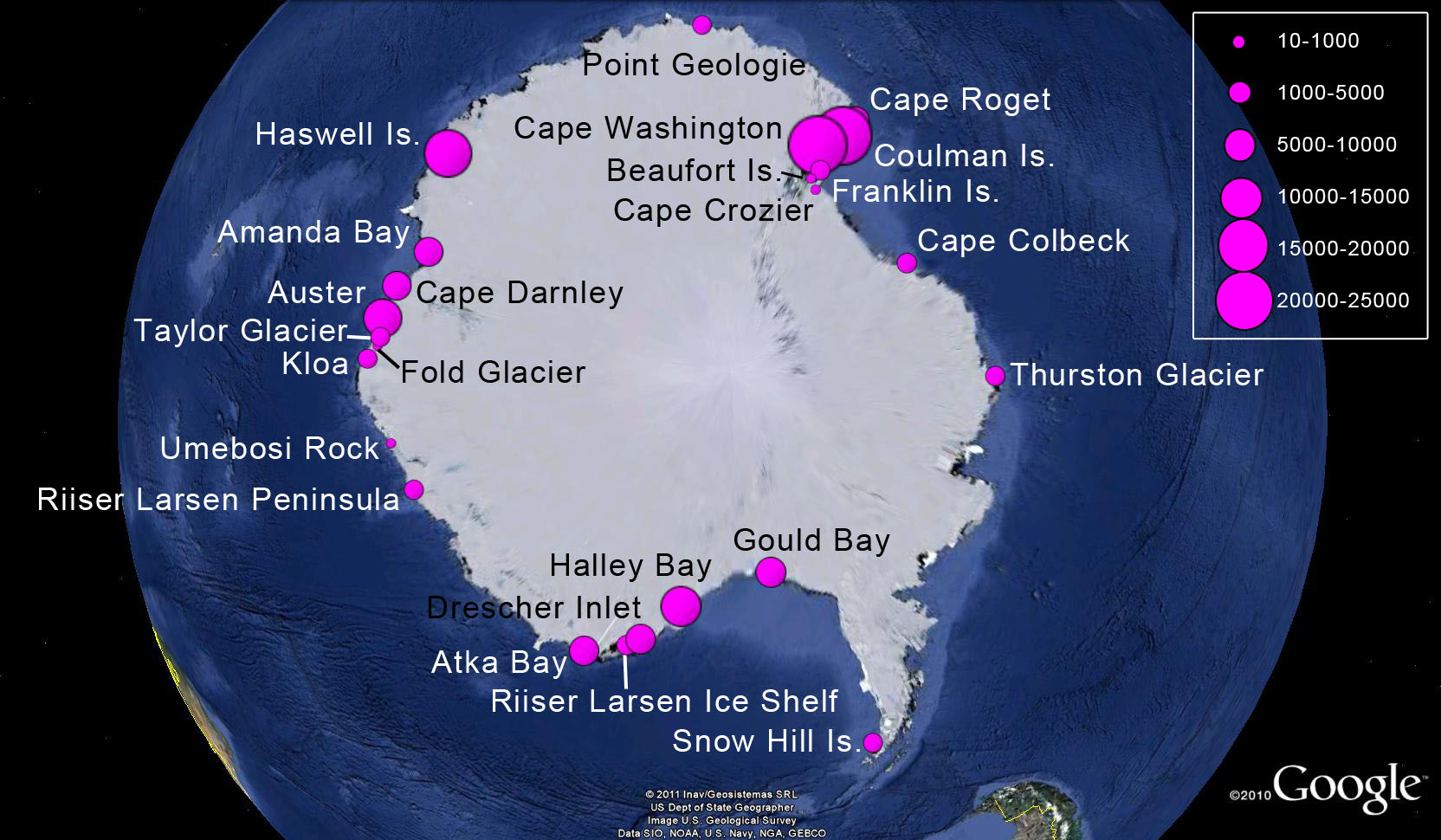-
DESCRIPTION
-
112-115 cm tall, weight from 22 to 40 kg (49 to 89 lb). It is the tallest and
heaviest of all living penguin species. Males and females are similar in plumage
and size, although males are slightly larger than females. The head is black and
sharply delineated from the white belly, pale-yellow breast and bright-yellow
auricular patches. Adults have dark grey backs and white fronts with two black
bands on the neck. The upper bill is black and the mandibular plates on the
lower bill gradually turn pink to orange. Chicks are pale grey, with black head
and white patches around the eyes and under the black bill that extend to the
chin, like a white mask. Chicks go through two layers of down (hatching and
cloverdown) before growing their juvenile plumage.
-
DISTRIBUTION
-
Circumpolar, endemic to Antarctica, almost exclusively between the 66° and 77°
South.

-
HABITAT
-
Marine and pelagic, in Antarctic waters. It breeds on pack ice near the coast or
up to more than 100 km inland.
-
BREEDING BIOLOGY
-
The only penguin species that breeds during the Antarctic winter, walking 50–120
km over the ice to their breeding colonies, which may include thousands of
individuals. The onset of their breeding cycle at most colonies is dependent
upon the formation of the fast-ice. A determinant of the arrival time of the
penguins in their breeding area is the extent of fast-ice, i.e. the distance
they have to traverse from the southern edge of the pack-ice to their breeding
sites. This distance is highly variable both spatially and temporally. The most
expansive fast-ice occurs in the Weddell Sea where it can stretch up to 400 km
north. In large sections of East Antarctica the fast-ice is only about 100 km
wide; in the Ross Sea, the extent of fast ice in the area of colonies is only a
few kilometers. The individuals arrive at colony in March-April, copulation
commences in mid-April, and females lay only one egg in May-June. There are no
nests nor do pairs occupy individual territories. The egg is incubated by the
male during 62 days on their feet, tucked into the brood pouch, while the female
go to the sea to feed. In late July/early August, the chicks hatch and the
females return relieving the males from their long fast. Parents subsequently
take turns foraging at sea, and caring for their chick in the colony. The
fledging is at 5 months. Sexual maturity is at 5 years old for females, 6 for
males.
Photos by: M. Libertelli and B. Wienecke





